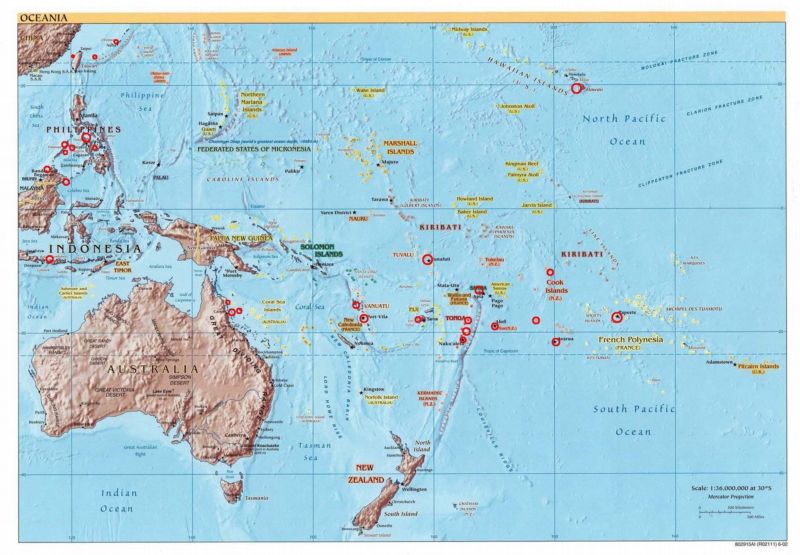[Top]
South Pacific
Now we are getting serious. I am aware that it is far and expensive to reach, but if you want to see clear deep warm waters for real, you have to freedive in the South Pacific. This is a map of the region with some of the places where I have been able to put my head underwater. You can click here for an enlarged version.